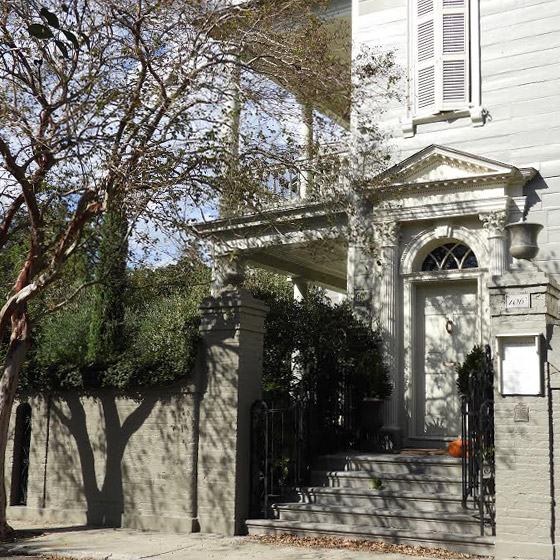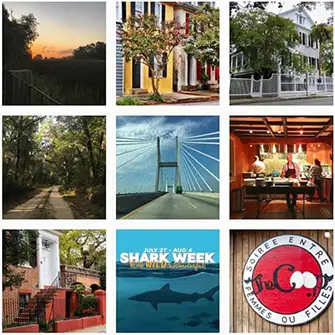
106 Tradd Street - The John Stuart House
106 Tradd is a single house -- but one with a difference. Yes, it's still one room wide, but it is one of the few early residences built with a side hall. As you can see, the front door is not a false door leading to a piazza. This front door opens into the side hall. The typical single house built before 1800 had its main doorway on the side, usually in the center.
The house at 106 Tradd Street was built around 1772 by Colonel John Stuart. Stuart, originally from Scotland, became an important man in Charles Town before the American Revolution; in 1762, he was appointed the King's superintendent of Indian affairs in the English colonies. Stuart was primarily a bridge between the British colonies and the Indians of those settled areas. As tensions rose between the thirteen colonies and England, Stuart remained loyal to the King and left the area. When the Revolutionary War broke out, the patriots confiscated Tory property, which included Stuart's house at 106 Tradd. Stuart died in Florida in 1779, and his former property on Tradd Street was sold in 1782, after the war ended.
Supposedly, 106 Tradd is the house where the famous South Carolina "Swamp Fox" Francis Marion was staying in 1780 right before the British invaded Charleston. According to the story, the host officer at 106 Tradd had locked the doors and kept drinking toasts to the patriots. Marion didn't drink and finally escaped by jumping out of a window. However, his ankle was broken. Because he was sent back to his plantation to recuperate, Marion missed being captured by the British when they took Charleston several weeks later. Being familiar with the backwoods, swampy terrain and the men in that area, Marion was able to lead a surprising and effective campaign of guerrilla warfare against the British until the end of the war.
It is quite possible that Marion and his men made the difference between loss and victory for the patriot cause in the South. In any event, my father, Marion Hampton Whaley, would certainly say so, especially since he was named after Francis Marion and Wade Hampton.
In my opinion, many of these historic structures in Charleston are noted, and rightly so, for their fine architecture and excellent renovations, but the people and the stories associated with them, past and present, make history come alive.
Next week, we'll delve into more history as we continue our Tradd Street journey.



